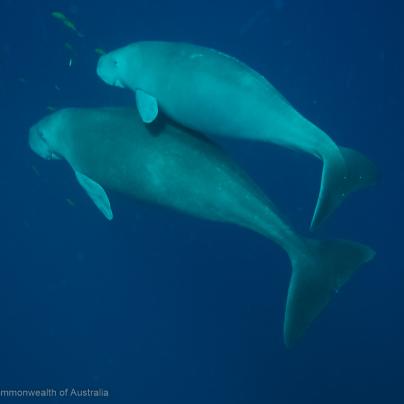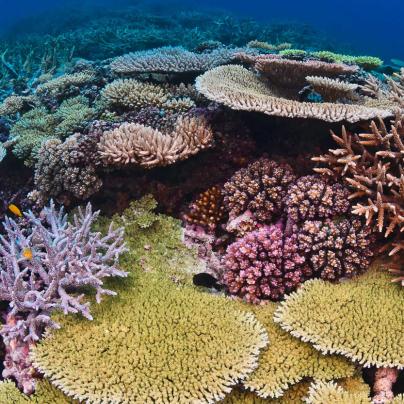Special Management Areas manage access and use of a specific area and are in addition to zoning.
There are different types of Special Management Areas across the Marine Parks and these and are shown on the relevant zoning maps.
-
Under the Great Barrier Reef Marine Park Zoning Plan 2003, a Special Management Area may be designated for a number of reasons including:
-
Conservation of a particular species or natural resource for example turtle, dugong, bird nesting sites or fish spawning aggregation sites
-
Protection of cultural or heritage values
-
Public safety
-
To ensure opportunities for appreciation by the public
-
Response to an emergency (for example, a ship grounding, oil spill or marine pest outbreak)
-
Restricting access to, or use of, areas of the Marine Park adjoining areas of which access is restricted or prohibited under a law of Queensland or the Commonwealth.
The specific rules and boundary descriptions of each Special Management Area can be found in the Great Barrier Reef Marine Park Regulations 2019.
To find out what Special Management Areas are in the region you’re visiting view the site specific management for the relevant area.
Spearfishing, commercial aquarium fish collecting, coral harvesting, beachworm harvesting, and aquaculture isn’t allowed in Public Appreciation Special Management Areas.
Public Appreciation Special Management Areas are designated at the following Conservation Park Zones (yellow zones):
-
Yonge Reef (14-138) - lee side (CP-14-4017)
-
Lizard Island Reef (14-116b): Mermaid Bay to Pigeon Point (CP-14-4018)
-
North Opal Reef (16-025) (CP-16-4029)
-
Flynn Reef (16-065) (CP-16-4035)
-
Thetford Reef (16-068) (CP-16-4036)
-
Fitzroy Island Reef (16-054) (CP-16-4039) *allows aquaculture operations
-
Dunk Island Reef (CP-17-4045/MNP-17-1073)
-
Bedarra Island Reef (CP-17-4045)
-
Orpheus Island Reef south-west (18-049b and c) (CP-18-4053)
-
Davies Reef (18-096) (CP-18-4056)
-
Cape Upstart (CP-19-4064) western side only
-
The following Conservation Park Zones (yellow zones) within the Whitsundays Public Appreciation Area:
-
Hayman and Hook Islands (CP-20-4075)
-
Saba Bay, Hook Island (CP-20-4076)
-
Double Cone Reef (CP-20-4077)
-
Molle Islands (CP-20-4080)
-
Whitsunday and Hamilton Islands (CP-20-4081)
-
Shute Island (CP-20-4083)
-
Long Island (CP-20-4084 and CP-20-4085)
-
Lindeman, Pentecost, Cole Island, except the part of the zone adjacent to Shaw Island (CP-20-4086)
-
Brampton Island - West (CP-20-4091)
-
Brampton Island - East (CP-20-4091)
-
North Keppel Island - Considine Bay (CP-23-4101)
-
Great Keppel Island - western side (CP-23-4102)
-
Heron Reef (CP-23-4104)
-
Wistari Reef (CP-23-4106)
To reflect Dugong Protection Areas under Queensland Fisheries legislation, these Special Management Areas are designated — to the extent the areas are within the Great Barrier Reef Marine Park. For more information about these areas, see the Great Barrier Reef Marine Park Regulations 2019.
-
View maps showing Dugong Protection Areas:
-
Cleveland Bay and Bowling Green Bay (refer to information below)
Bowling Green Bay
In 2011, there were amendments to commercial netting rules for the Special Management Area at Bowling Green Bay and amendments to the Great Barrier Reef Marine Park Regulations 1983 to increase protection to dugong in the area.
The rule changes further restrict commercial net fishing within the existing Species Conservation (Dugong Protection) Special Management Area.
Clarification of rules in dugong protection area Bs for net fishing
Amendments to the Great Barrier Marine Park Regulations in 2019 gave greater protection to dugong in and around headland areas, by restricting the use of set mesh nets in certain parts of particular Dugong Protection Area Bs.
The changes are a technical amendment to clarify long-standing existing netting rules, by providing clear definitions of areas around headlands where the use of offshore set nets is prohibited to reduce the risk of incidental catch to dugong.
View information sheet and maps about minor netting changes in DPA Bs.
Restricted Access Special Management Areas cannot be used or entered without written permission except for the limited circumstances detailed in the Regulations.
- Restricted Access Special Management Areas are designated at the following locations:
- Maclennan Cay Reef (11-070a)
- Moulter Cay Reef (11-130)
- Raine Island Reef (11-243)
- Australian Institute of Marine Science (SR-19-2008)
- One Tree Island Reef (SR-23-2010).
In addition, shore access to many islands may be restricted or restricted seasonally. Please refer to the Queensland environment department for more information.
Maritime Cultural Heritage Special Management Areas protect identified maritime heritage sites in the Marine Park.
The rules for these areas prohibit fishing, collecting and anchoring within the special management area and do not allow vessels to enter for reasons other than transiting.
For information and the location of Maritime Cultural Heritage Special Management Areas, see Maritime Heritage.
The Princess Charlotte Bay Special Management Area protects dugong within Princess Charlotte Bay in the Far Northern Management Area of the Marine Park.
The Special Management Area requires commercial net fishers to obtain a permit to operate within Princess Charlotte Bay.
See Zoning Map 3 (Cape Melville) for the location of the Princess Charlotte Bay Special Management Area.
The Natural Resources Conservation Special Management Area is located at Mermaid Cove, Lizard Island.
You can’t fish or collect in the Natural Resources Conservation Special Management Area except for trolling or bait netting for pelagic species, limited impact research and research with a permission.
See Cairns/Cooktown site specific management for more information on access and use around Lizard Island.
Seasonal Closure (Offshore Ribbon Reefs) Special Management Areas provide additional protection to the Ribbon Reefs and adjacent habitats.
The Ribbon Reefs and adjacent areas are unique, as they are located at a particular part of the continental shelf, which drops sharply away from the reef edge. These important areas of reef support diverse species, including large pelagic fish such as marlin.
These Special Management Areas prohibit all fishing and detached dories in these areas from 1 January to 31 August each year.
-
Locations for Seasonal Closure (Offshore Ribbon Reefs) Special Management Areas are:
-
Areas adjacent to Day Reef (14-089) Scientific Research Zone (orange zone) (SR-14-2001)
-
Area adjacent to Ribbon No. 10 Reef (14-146) Marine National Park Zone (green zone) (MNP-14-1030)
-
Area adjacent to Ribbon No. 7 Reef (15-026), Ribbon No. 6 Reef (15-032) Preservation Zone (pink zone) (P-15-12) and unnamed reef (15-034) Marine National Park Zone (green zone)
-
Ribbon No. 5 Reef Patches (15-042) Buffer Zone (olive green zone) (B-15-3007)
-
Ribbon No. 2 and 3 Reefs and inter-reefal areas Buffer Zone (olive green zone) (B-15-3008).
To provide further protection to the ecological values of the Ribbon Reefs, no dories are allowed to be detached from their primary vessel at any time in the following Special Management Area locations:
-
Area to the east of Yonge Reef (14-138) and no name Reef (14-139)
-
Area around the No. 10 Patches (No. 3) (14-153a) and No. 10 Patches (No. 4) (14-153b).
Within all Marine National Park Zones (green zones) dories are not allowed to be detached from their primary vessel at any time.
In all Conservation Park Zones (yellow zones) no more than one dory is to be detached from its primary vessel at any time.
In all Buffer Zones (olive green zones) — excluding those that are declared No Dories Detached (Offshore Ribbon Reefs) Special Management Areas — no more than one dory is to be detached from its primary vessel at any time.
Emergency Special Management Areas may be designated for conservation of one or more species, conservation of natural resources, protection of cultural or heritage values, public safety, emergency situations requiring immediate management action. There are no current Emergency Special Management Areas.



